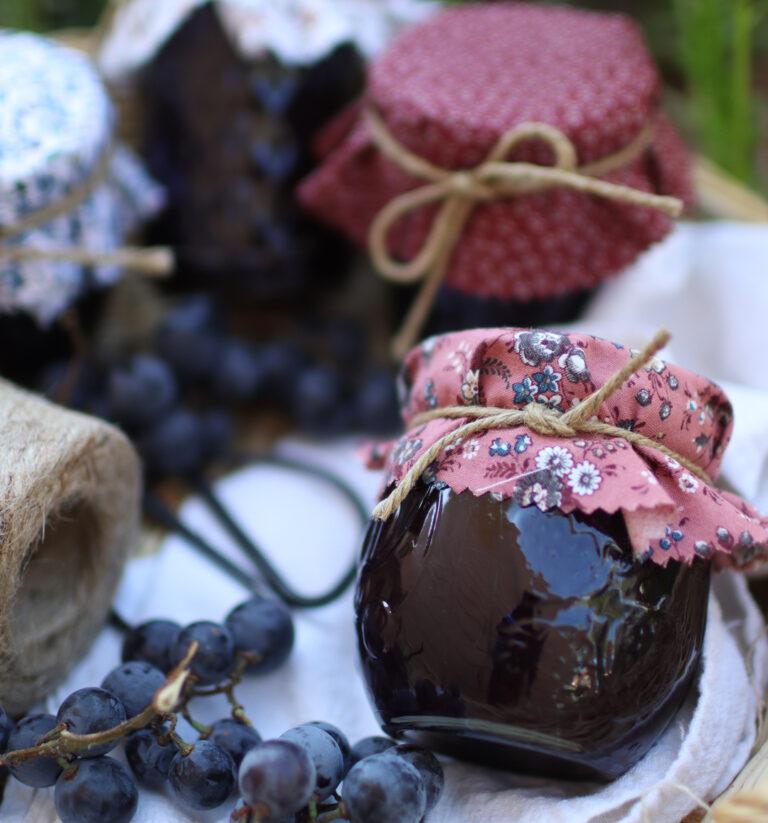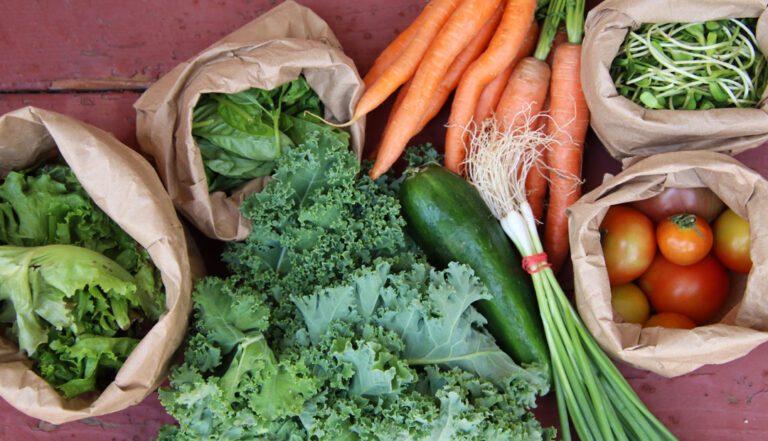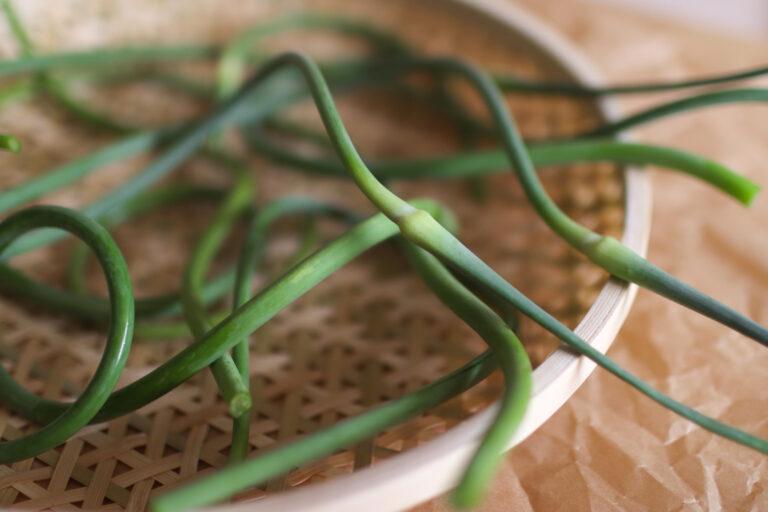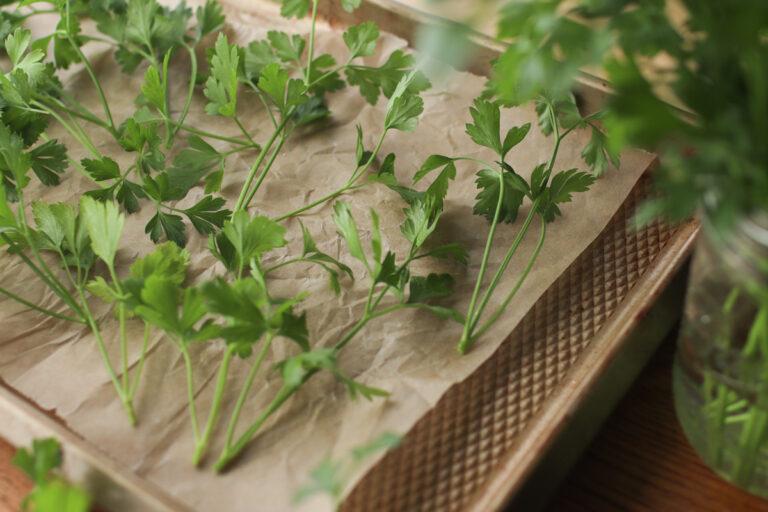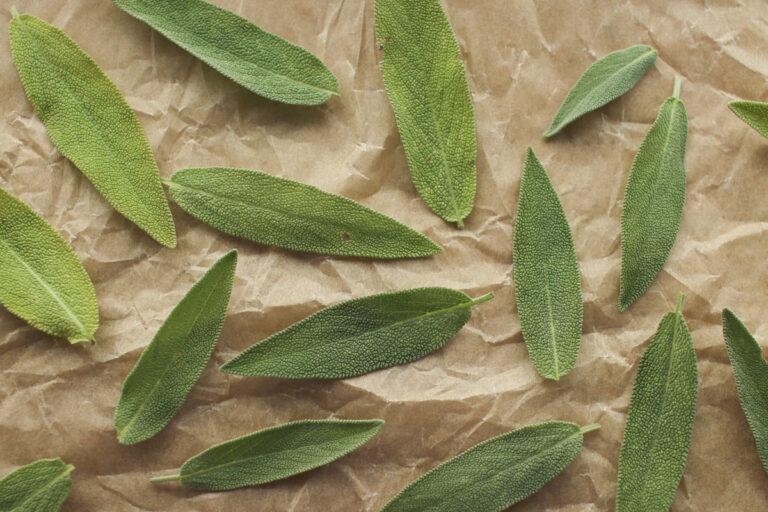How to Dry Chamomile the Easy Way (for Tea and More)
Learn how to dry chamomile in a few simple steps to preserve it for later use. Drying chamomile is very easy and allows you to enjoy homegrown chamomile all year long!

There are few things that make me happier in the summer than stepping into the garden and being hit with a whif of chamomile. These fragrant, dainty flowers are one of my favorite edible flowers to grow for so many reasons.
Of course, when you grow large quantities of a crop, you have to figure out what to do with it all! Fortunately, preserving chamomile is very easy by drying it. With a small patch of chamomile growing in the garden, I have dried flowers for tea, skincare, syrups, and more all year through.
Chamomile Tea Benefits
Chamomile has a plethora of health benefits and medicinal properties that make it a popular herb to have for tea, skincare, and more. Its benefits include but are not limited to:
- Nervous system support
- Digestive aid
- Improved sleep
- Anti-inflammatory properties
- Lessens menstrual symptoms
- Immune support
How to Grow Chamomile from Seed
Chamomile is an easy and fun plant to include in your tea garden because it smells delightful, provides beautiful flowers that pollinators love, and results in delicious tea that can be enjoyed year-round (after the flowers are dried!).
Chamomile is best grown from seed. About 4-6 weeks before your last frost date, scatter the chamomile seeds onto fresh compost in an area of your garden that gets full sun. Do not cover them with any soil. I like to create a chamomile “patch” and dedicate an area of the garden solely to chamomile.
While the seeds are in the process of germinating, they will need to be watered once or twice a day (or more in windy conditions). The more the seeds are able to stay damp, the better germination you will have.
When the seeds have germinated and the garden is full of chamomile seedlings, it is recommended that you thin the plants to one every eight inches. This means pulling excess plants so that the ones remaining have eight inches of space around them to grow. I have tried thinning them as recommended and leaving them as-is, and I haven’t found a lot of difference. However, for the very best results possible, I would still recommend thinning them to at least every 4-6 inches.
After the first year, granted some of your chamomile flowers are left to go to seed, you will have plenty of chamomile volunteers and will not need to replant. Of course, these volunteers may be in areas you don’t want to grow chamomile, so planting seeds with intention may be preferable to you.

Roman Chamomile vs. German Chamomile
There are two main types of chamomile that gardeners typically grow: Roman and German. Both are beautiful, fragrant, and great for tea. However, there are a few key differences.
Roman Chamomile
The biggest difference between the two types of chamomile is how they grow. Roman chamomile is a perennial plant that grows in a carpet-like ground cover. The plant does not get more than a few inches tall and comes back year after year to form blossoms that are larger than German chamomile.
German Chamomile
This type of chamomile is an annual, but it reseeds very readily and is likely to come back on its own each year. German chamomile grows tall and leggy, usually around 2-3 feet, and oftentimes falls over with the weight of the blossoms. German chamomile flowers are smaller and more fragrant than Roman chamomile. German chamomile is more commonly grown as a tea herb because it produces more flowers per plant than Roman chamomile.
This post contains affiliate links. If you make a purchase through the links, I will earn a small commission at no cost to you. As an Amazon Associate, I earn from qualifying purchases. Read my full disclosure here.
What Part of the Chamomile Plant is Used?
The flowers are the most commonly used parts of the chamomile plant, but buds and leaves can also be used. The stem of the plant and the roots are not used when it comes to chamomile, though stray stems may find their way into your tea.
How to Harvest Chamomile
Chamomile is typically planted in early- to mid-spring for an early summer bloom. When in full bloom, the small daisy-like flowers will be fully opened with white petals surrounding a yellow center. The petals will fold down in the evening and morning, then open up in the middle of the day.
I recommend harvesting chamomile during the day when the petals are open so you can know which ones are ready to harvest. I prefer to harvest in the early evening when it’s cooler but the flowers are still open.
To harvest chamomile, place two fingers under the flower head with one finger on either side of the chamomile stem. Pull up, plucking the flower off of the stem. Continue this with any flowers that are fully open.
Chamomile plants do best with regular harvesting. I shoot for 1-2 times a week. If the flowers are left on the plant without regular harvesting, they will go to seed and the plant will die.

Drying Chamomile to Preserve it
Chamomile is an incredible herb to have for health benefits and general enjoyment. Unfortunately, it is only in full bloom for 1-3 months out of the year on average. That’s when preserving comes in.
Preserving is a critical element to gardening and foraging as it allows one to make a large harvest last for months and prevents food waste. When chamomile is in season, you likely have more than you can reasonably consume before it goes bad. Preservation allows you to have chamomile for the rest of the year with just a bit of effort when its plentiful.
While there are a lot of different ways to preserve fruits, veggies, and herbs, drying is the easiest and most common method for chamomile. Drying chamomile removes all of the moisture from the flowers, which prevents rot and captures the flavor. Once chamomile is dry, it will remain fresh for up to a year and still be good (though flavor quality may vary) for many years after.
How to Dry Chamomile
Drying chamomile is the best way to preserve your homegrown chamomile and there are a few different ways to accomplish it. Begin by harvesting your chamomile and removing any stems or bugs. If you wish, you can wash the chamomile under cool water, but be sure to dry it well with a towel or salad spinner.
Air Dry
Chamomile can be air-dried quite easily, especially if you live in a dry climate. Air drying is the easiest way, but it does take more time than the other methods.
To air dry, lay the chamomile out on an herb drying screen or a cooling rack lined with a tea towel. However you choose to air dry, be sure it gets great airflow and the chamomile is in a single layer. Allow the chamomile to air dry for 2-4 weeks, or until fully dried.

Oven
This may be a better method if you live in a humid area or don’t have a lot of space to fill with drying chamomile flowers. However, it must be done with caution so the flowers don’t get burnt.
To dehydrate chamomile flowers in the oven, lay the fresh flowers out in a single layer on a baking sheet lined with parchment paper.
Place in a preheated oven at the lowest setting possible, usually between 170° and 200° F. Prop the oven door open with a wooden spoon to let out the moisture and bake until the flowers are completely dry.
Check them every 10-15 minutes to ensure that they are not overcooked. Allow the dried flowers to cool and continue to dry overnight before placing them in a jar.
Dehydrator
If you have a food dehydrator, this is a great way to dry the flowers quickly and effectively. Spread the chamomile blossoms out in a single layer on the dehydrator trays and preheat the dehydrator to the lowest setting. The flowers should take 2-4 hours depending on which dehydrator you have.
Uses for Dried Chamomile
Dried chamomile is most frequently used for delicious herbal tea, but there are many other ways you can use it. Here are just a few ideas:
- Potpourri
- Chamomile simple syrup for cocktails and mocktails
- Adorn cakes or cookies
- Bake into pastries for a chamomile-flavored treat
- Use in bath and beauty products, such as lotion or soap
- Homemade salves and other herbal remedies
- Soothing herbal baths

Dried Chamomile Storage
Once the chamomile is fully dry, it is best to store it in an airtight container such as a glass jar. Try to keep the chamomile out of direct sunlight or unusually high temperatures.
Simple Homemade Chamomile Tea Recipe
It is immensely rewarding and satisfying to brew a cup of tea with your very own chamomile tea from your herb garden. Here are a couple of recipes to get you started. Want to avoid boiling the water altogether? Learn how to make sun tea instead!
Ready to try your own tea blend? I love this super simple lavender chamomile tea recipe!

Chamomile Tea (Hot and Iced)
It is immensely rewarding and satisfying to brew a cup of tea with your very own chamomile tea from your herb garden. Learn how to make both hot and iced chamomile tea!
Ingredients
- 8 ounces boiling water
- 1 tablespoon dried chamomile flowers
- Sweetener of choice (optional)
Instructions
Iced Tea
- Put the dry chamomile flowers in a cloth tea bag or tea infuser, then place in a 16-ounce glass jar.
- Pour the hot water over the tea and allow to steep for about 5 minutes.
- Remove the dried chamomile. Add sweetener if desired and stir in.
- Fill the jar to the top with ice and enjoy.
Hot Tea
- Put the dry chamomile flowers in a cloth bag or tea infuser, then place in a mug.
- Pour the hot water over the tea and allow it to steep for about 5 minutes.
- Remove the dried chamomile. Add sweetener if desired and stir in.
- Enjoy hot with milk if desired.
Notes
Notes: Feel free to substitute part of the chamomile for other dried herbs. It goes well with lavender, lemon balm, mint, and more.


